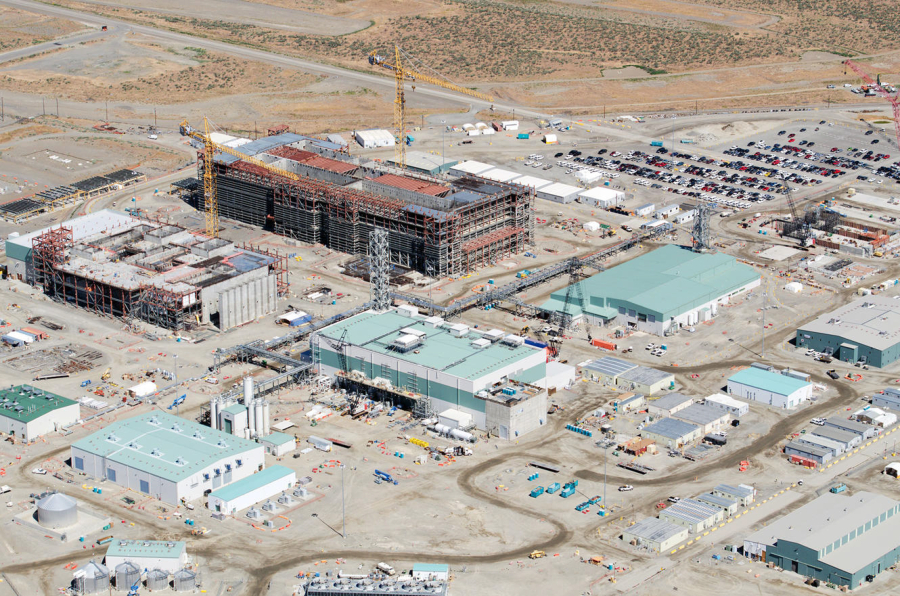“Even with a potential surge in production at Los Alamos, there remains uncertainty about that capability, especially with their history of outages,” U.S. Rep. Joe Wilson
By Colin Demarest cdemarest@aikenstandard.com postandcourier.com August 21, 2021

ALEXANDRIA, Va. — In late 2018, a behemoth fuel facility at the Savannah River Site was axed. Its cancellation, enabled by a court ruling and promises of saving billions of dollars, marooned more than a decade of work and vexed a clutch of South Carolina politicians.
What remained was a shell: a Mixed Oxide Fuel Fabrication Facility that was partially built and would eventually be secured and preserved, like an insect suspended in amber.
In the years that followed, the federal government began seriously pursuing a nuclear weapons mission – the crafting of warhead components known as plutonium pits — using the MOX skeleton as a springboard. That effort continues today, and at a clip some have likened to the Cold War or the Manhattan Project, the odyssey that birthed the nuclear age.
But where MOX failed, the Palmetto State pit factory will not, according Michael Thompson, a National Nuclear Security Administration executive. While bilateral friction and “higher-level policy choices” hamstrung the reactor fuel project, it’s a different matter when it comes to the plutonium cores and the Savannah River Plutonium Processing Facility, Thompson argued earlier this month.
“The one thing I would say to the people in and around the community is … MOX was an international agreement with the Russians that, essentially, they didn’t want to agree to over time, and we didn’t, for different reasons,” Thompson said, pivoting to pits: “This is an internal, U.S. military requirement driven by the Strategic Command commander saying, ‘We need this product.’ And to me, that’s the big difference.”
The Mixed Oxide Fuel Fabrication Facility was a child of the Plutonium Management and Disposition Agreement, a U.S.-Russia plutonium disposal pact now in purgatory. (Russian President Vladimir Putin years ago announced Moscow was suspending its implementation of the PMDA. A 2020 arms control report published by the State Department noted neither the U.S. nor Russia had violated the agreement.) MOX was, as Thompson summarized, “an international treaty driver.” Pit production isn’t.
“We bring with us to the table, and start the discussion with, the military requirement that has not changed in many years,” the NNSA executive said at the Nuclear Deterrence Summit. “And it won’t change.”
Federal law mandates the fabrication of 80 plutonium cores by 2030 – a deadline that will be blown past, according to the best available information. The planned Savannah River Plutonium Processing Facility at the Savannah River Site will likely come to fruition years after 2030, and a second pit production site, at Los Alamos National Laboratory in New Mexico, can’t close the gap.
“Even with a potential surge in production at Los Alamos, there remains uncertainty about that capability, especially with their history of outages,” U.S. Rep. Joe Wilson, a South Carolina Republican, told the Aiken Standard earlier this year. “I plan on continuing frequent dialogue with both NNSA officials and military leadership to address the best strategy to mitigate this risk.”
Wilson’s district includes the Savannah River Site and all of Aiken County. The senior House Armed Services Committee member in March pushed President Joe Biden to “prioritize long-overdue investments required for the Department of Defense and the National Nuclear Security Administration.”
“We are at a critical juncture to ensure that DOD and NNSA nuclear programs are maintained and executed on time,” reads the letter Wilson and other lawmakers signed. “Our nation’s security and the security of our allies and partners depend on it.”
Once manufactured, the sought-after pits are bound for the nation’s massive – but aging – nuclear arsenal. That sort of inward responsibility, upgrading the nation’s prized atomic sword and shield, is the key differentiator, Thompson suggested this month. Because the pit quota “is a military requirement,” and “because it has not changed,” he said, “we are pulling out all the stops, if you will, and coming up with” all viable options to satisfy it.
“We’re not throwing in the towel, but we are realistic,” Thompson said. “Our current planning suggests that we won’t make 2030, but we’re going to do everything we can to get 50 pits a year at Savannah River in the early ’30s.”
The U.S. has lacked the means to manufacture plutonium pits in significant volumes since the raid, and subsequent razing, of the Rocky Flats Plant in Colorado. The famine has amplified the pressure now being shouldered; Adm. Charles Richard, the leader of U.S. Strategic Command, in April told Congress that failing to jumpstart pit production risks “catastrophic failures given an infrastructure incapable of responding in a timely manner.”
“Bottom line,” Richard testified, “re-establishing plutonium pit production is a ‘must do’ and is foundational to stockpile modernization.”
